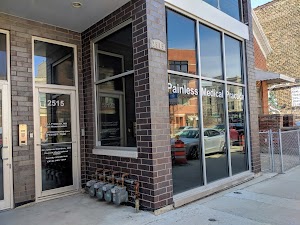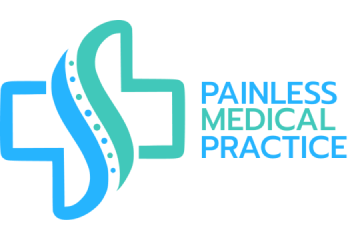Botox Injections
What is Botox Injections and How Does it Work?
Botox is a popular treatment made from botulinum toxin, which is used in small, safe amounts to help reduce wrinkles and treat certain medical conditions. Botox injections work by blocking nerve signals to specific muscles, which keeps them from contracting. When muscles stay relaxed, it smooths out the skin above them, reducing lines and wrinkles – especially on the forehead, around the eyes, and between the brows.
Beyond cosmetics, botulinum toxin injections are also helpful for various health conditions. For example, they can reduce chronic migraines, control excessive sweating, and ease muscle spasms. Botox for pain management is another growing area of use, as it can help relieve discomfort from conditions like TMJ disorders, neck pain, and certain types of nerve pain by targeting the affected muscles and reducing tension.
Botox treatment is a quick, minimally invasive procedure done in-office, with effects that typically last a few months. Many people choose botulinum toxin treatment as a simple way to achieve smoother skin or manage certain conditions, including chronic pain.

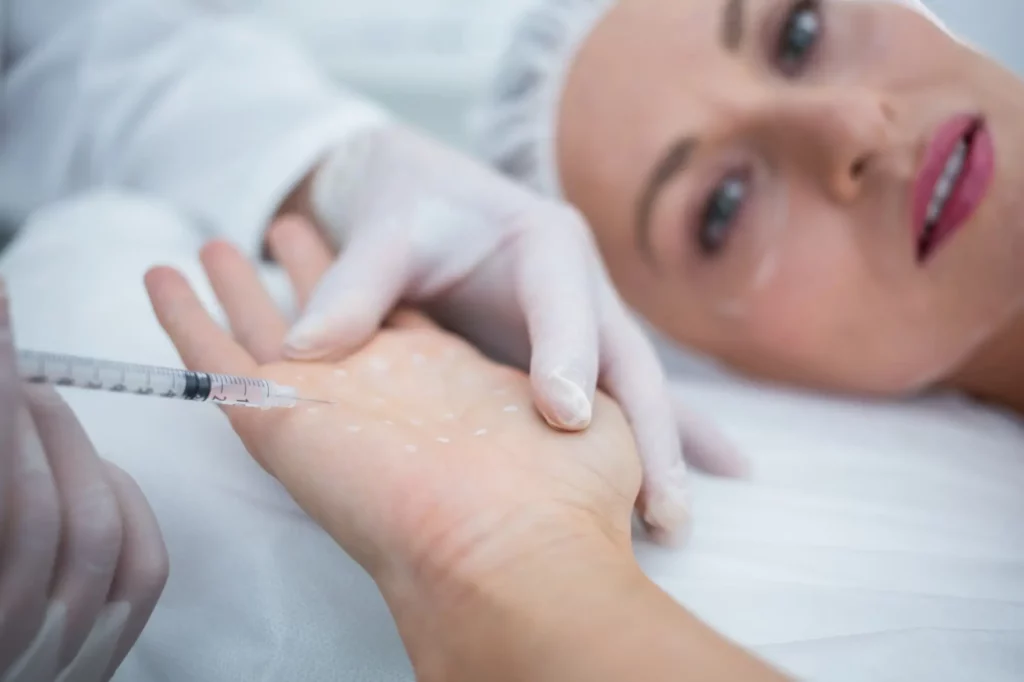
Who Can Benefit from Botox Injection Treatment?
Botox treatment can benefit a wide range of people looking to address both cosmetic and medical concerns. Beyond just improving aesthetics, Botox can also provide relief for individuals dealing with chronic migraines, muscle spasms, and certain other medical conditions.
Botox for Migraines Treatment
Botox for migraine treatment is using Botox to help prevent them before they start. For people with chronic migraines, Botox is injected around specific areas in the head and neck. These injections block pain signals from the nerves, which can help reduce the frequency and intensity of headaches. Botox injections for migraines are often done every 12 weeks and can provide noticeable relief for many who don’t respond well to other medications. Botox injection for migraine is a simple, minimally invasive option.
Botox for Headaches Treatment
Botox headache treatment works by relaxing specific muscles around the head and neck that typically contribute to headaches. During the treatment, small Botox injections for headaches are placed in special areas, which block pain signals from reaching the brain. This helps reduce both the intensity and frequency of headaches. The treatment is minimally invasive and usually done every few months.
TMJ Treatment Botox and How Does it Work
Botox can be an effective option to relieve TMJ (temporomandibular joint) pain. Medical Botox injections are applied to the jaw muscles, which helps relax them and reduce the tension that often causes TMJ pain. By using botulinum toxin injections in these specific muscles, Botox blocks the nerve signals that lead to clenching and tightness, which can ease pain and improve jaw movement. Many people find that Botox to treat TMJ helps them manage jaw pain, teeth grinding, and even related headaches.
How Does Botox Treatment for Trigeminal Neuralgia Work
Botox can offer relief for trigeminal neuralgia by reducing nerve-related pain signals. In Botox medical treatment for this condition, small injections are placed near the areas where the trigeminal nerve branches in the face. Botox injection treatments help by blocking pain signals from reaching the brain, which can ease the intense, sudden facial pain typical for trigeminal neuralgia.
Botox Injection Procedure
Botox injection procedure typically looks like this:
- Consultation. During your first visit, your Botox doctor will discuss your health or beauty goals and review your medical history. This helps them personalize the Botox treatment service to your specific needs.
- Preparation. Your skin is cleansed, and any areas needing numbing may get a mild anesthetic. This step is quick and eliminates pain and discomfort.
- Injection. The doctor uses a thin needle to inject small amounts of Botox into targeted muscles. For Botox for pain relief, these injections are placed near the nerves or muscles causing discomfort. Injection place depends on your goals.
- Aftercare. There’s minimal downtime. Most people go back to normal activities right after. Your pain management clinic will give you simple aftercare tips to help with any soreness.
- Follow-up. Results are often noticeable within days and can last from a few weeks to months. Your doctor will set up follow-ups to adjust or repeat treatment if needed.
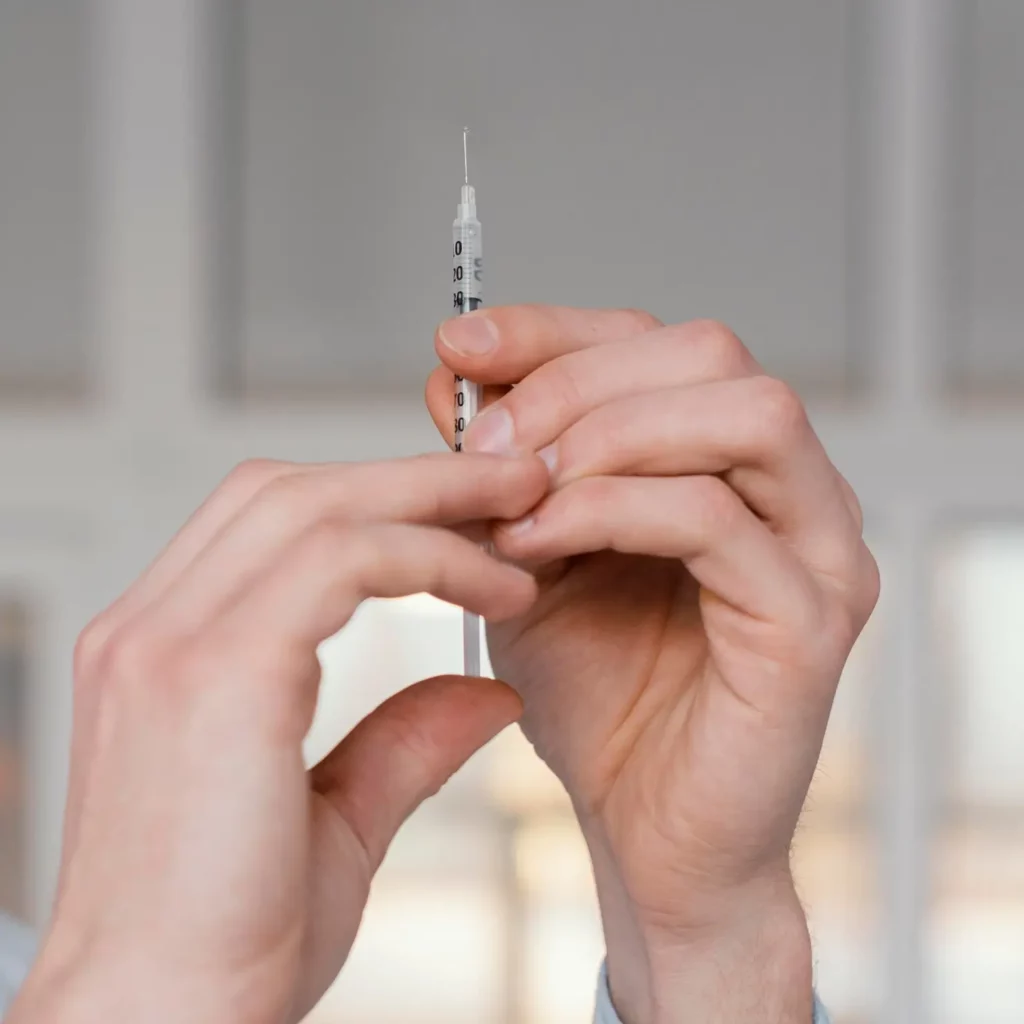
Benefits of Botox Injections
- Smooths Out Wrinkles. Botox injections relax facial muscles, reducing the appearance of lines on the forehead, around the eyes, and other areas.
- Botox to Treat Migraines. Botox therapy can be used to help prevent migraines by blocking pain signals, reducing their frequency and intensity.
- Relieves TMJ and Jaw Pain. Botox relaxes tense jaw muscles, which can ease pain caused by TMJ disorders and teeth grinding.
- Eases Muscle Spasms. Botox for muscle spasms works especially well in the neck, eyes, and limbs.
- Reduces Excessive Sweating. Botox can be injected to block sweat glands, helping people who experience excessive sweating.
- Minimally Invasive with Quick Recovery. Botox therapy is a simple, in-office procedure with minimal downtime, allowing you to quickly get back to daily activities.
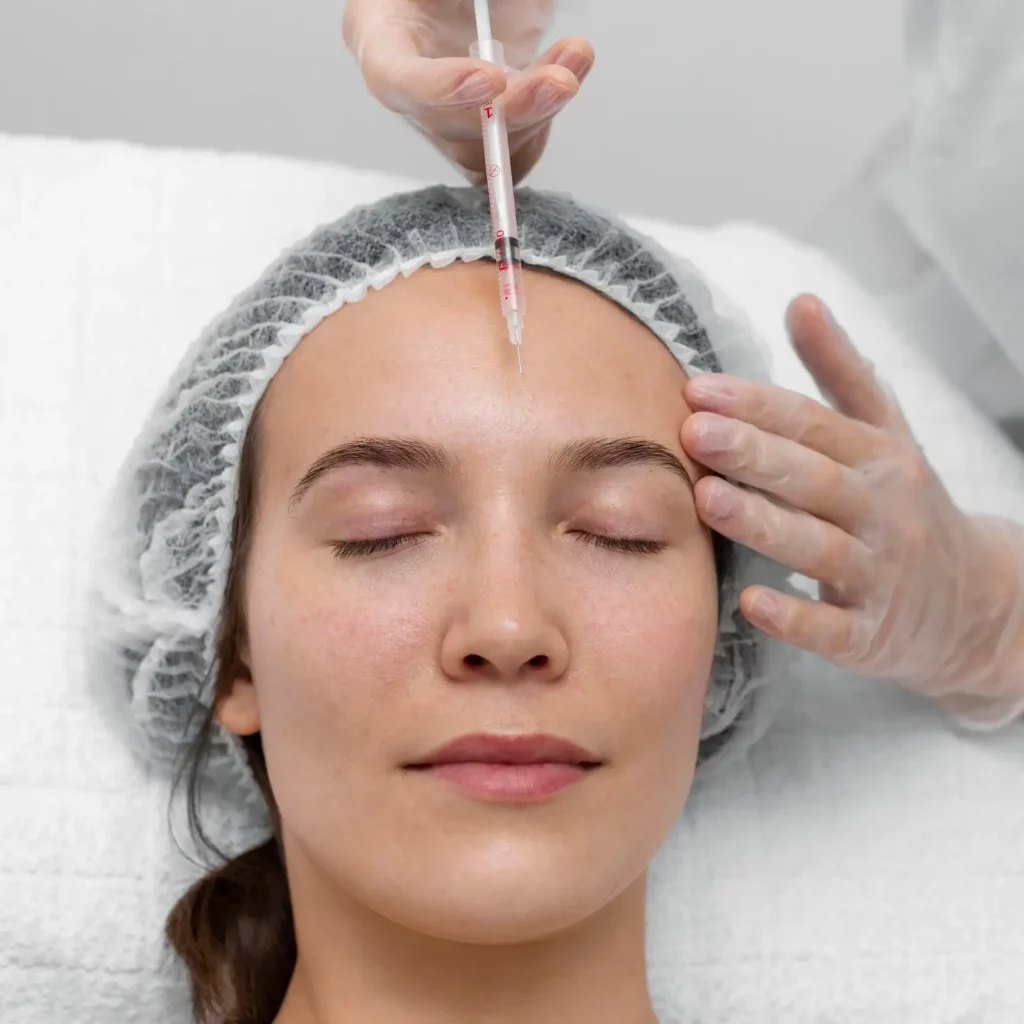
Expected Results After Botox Injection Therapy
After Botox therapy, you’ll usually start seeing results within a few days, with full effects visible after about two weeks. For cosmetic treatments, you’ll notice smoother skin and a reduction in wrinkles. For Botox shots for migraines, it may take a couple of weeks to feel the full relief, as the Botox blocks pain signals and prevents migraine triggers.
The effects of Botox typically last around three to four months, but it depends on the condition being treated. After that, the muscle activity gradually returns to normal, which means wrinkles or pain symptoms may come back. To maintain pain relief or cosmetic benefits, you’ll likely need to schedule repeat treatments every few months. Your provider can help set up a treatment plan that keeps your results consistent.
Possible Side Effects of Botox Injections
- Headache. While Botox is often used for migraines, some may experience a mild headache after botulinum toxin treatment. This usually goes away quickly.
- Drooping or Weakness. In rare cases, muscles near the injection site may feel weak or droop temporarily.
- Bruising. Light bruising can happen around the treated area, especially for people prone to bruising.
- Mild Pain or Swelling. Some people experience minor pain, swelling, or redness at the injection site. This is one of the common Botox injection side effects and usually fades quickly.
- Allergic Reactions. Although very rare, allergic reactions like itching or rashes can occur and are part of the risks of Botox injections.
- Flu-Like Symptoms. Some may experience mild, flu-like symptoms for a day or two, including fatigue or slight muscle soreness.
for your pain needs
Choose Painless Medical Practice for Botox Injections in Chicago, IL
Choose Painless Medical Practice in Chicago, IL, for your Botox injections and get highly professional, personalized and genuine care with Dr. Jaroslav Tymouch, MD and Founder. Dr. Tymouch’s expertise ensures that every Botox treatment is personalized to meet your unique needs, whether it’s for smoothing fine lines, managing chronic pain, or even migraines. Alongside Botox, we also offer a wide variety of other effective treatments like joint injections, epidural injection, and steroid injection to address pain and inflammation, making our clinic a top choice for all your pain management needs.
At Painless Medical Practice, we actually prioritize you and your comfort, with friendly staff and environment. Ready to feel and look way better? Contact us today to schedule your consultation and discover how we can help you!

Our Insurance Partners









FAQs About Botox Injections
How Long Do Botox Injections Last?
Botox injections typically last between three to six months, depending on the area treated and individual factors. Over time, as the effect wears off, muscle activity gradually returns, and repeat treatments may be needed to maintain results. Your doctor will provide a personalized timeline based on your response to treatment.
How Many Botox Injections for Migraines?
For chronic migraine management, a typical Botox treatment may involve several small injections at specific points around the head, neck, and shoulders. The exact number can vary based on the severity of the migraines and individual needs, but many patients receive around 30–40 injection sites in one session. This treatment is usually repeated every three months to achieve ongoing relief.
What Should I Expect During Botox Treatment?
During Botox treatment, a healthcare provider will use a fine needle to inject small amounts of the medication into targeted areas. The procedure is generally quick and minimally invasive, often lasting about 10–20 minutes. Most patients experience only mild discomfort, and normal activities can typically be resumed shortly afterward.
How Does Botox for Migraines Work?
Botox for migraines works by blocking neurotransmitters that carry pain signals, effectively stopping the transmission before they reach the nerve endings. This helps reduce the frequency and intensity of migraine attacks. The effect usually begins within a few days to a couple of weeks after treatment, with many patients experiencing significant relief.
Does Botox Injection Hurt?
Botox injections are generally well-tolerated and cause minimal discomfort. The needle used is very fine, and any sensation is usually brief and mild. Some patients describe the feeling as a slight pinch, and most can resume regular activities shortly after the procedure.
How to Prepare for Botox Injection?
To prepare for a Botox injection, avoid blood-thinning medications, alcohol, and certain supplements for a few days prior to your appointment, as these can increase the risk of bruising. Arrive with a clean face, and inform your healthcare provider of any medications you’re taking or health conditions you have. They will give you specific guidance to ensure optimal results and safety.
What People Say About Botox Injections
our services before
